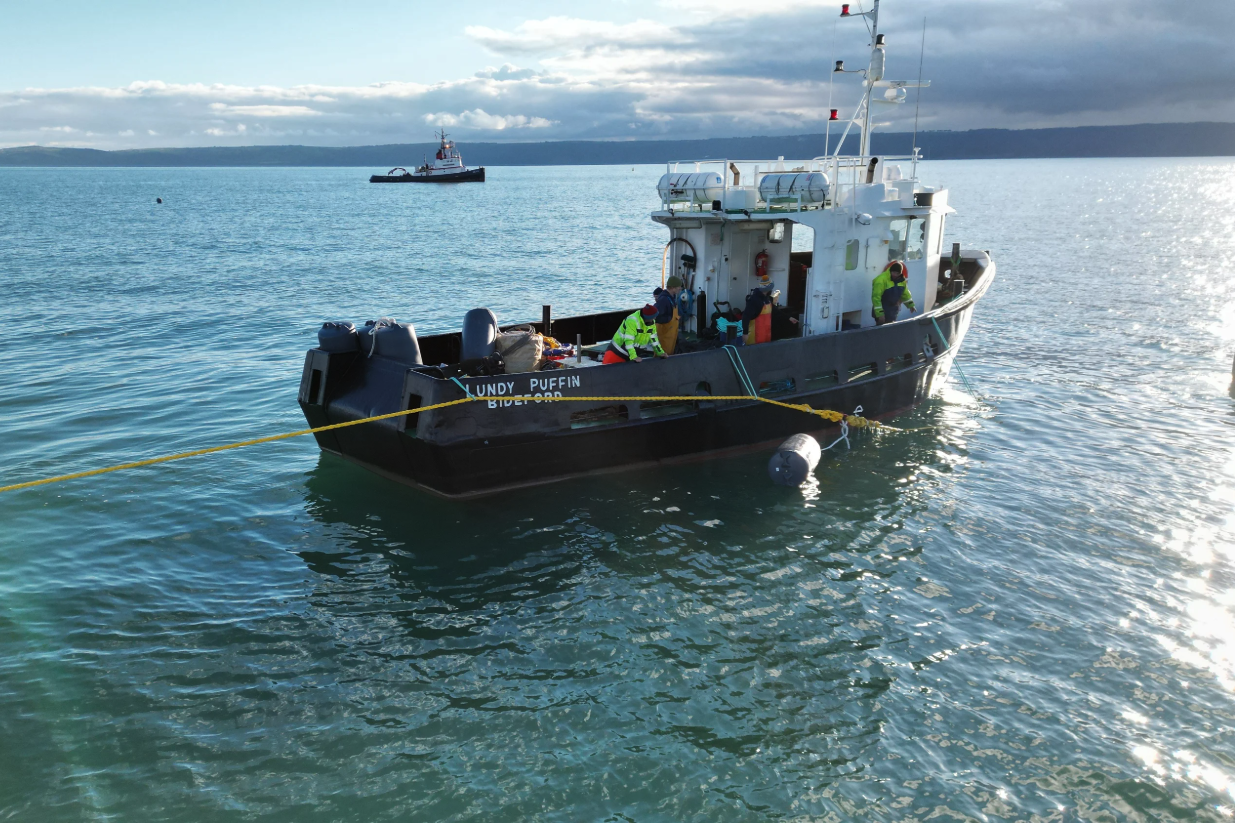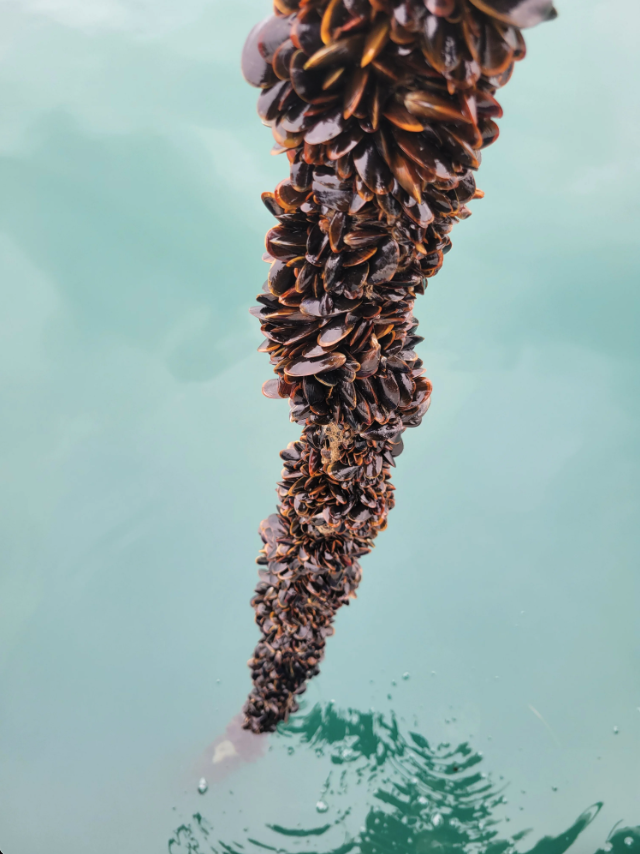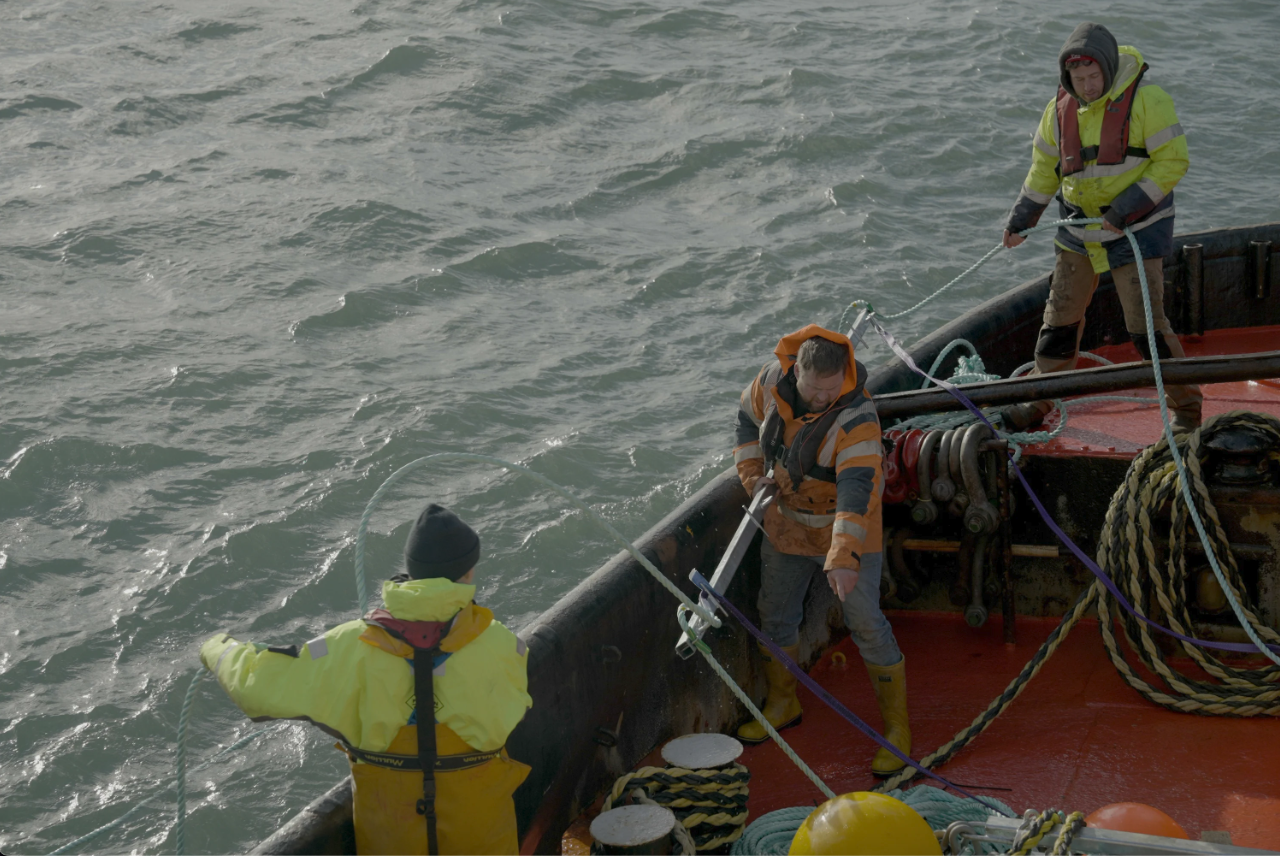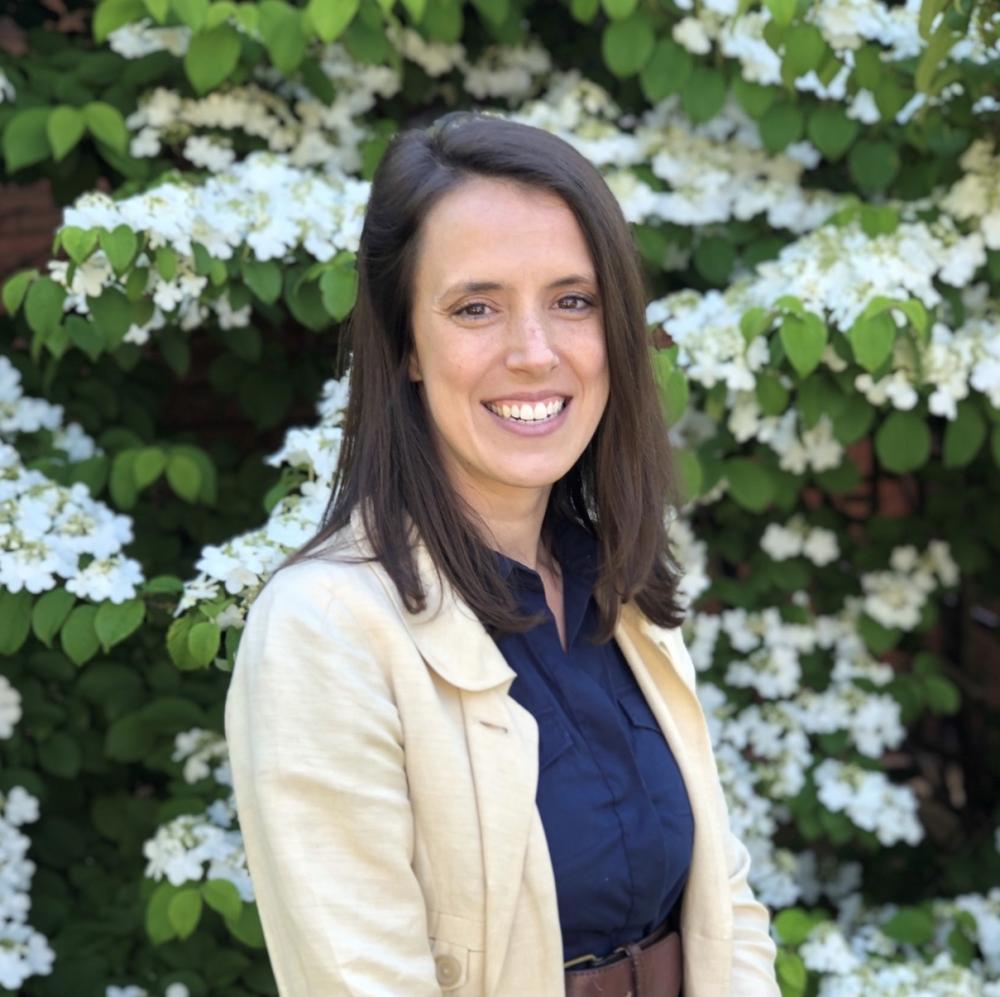
A local partner of the Blue Forest Project, Lundy Puffin, installs the first ropes for the mussel and seaweed farm off the coast of North Devon, England, in 2022. (Image courtesy of Algapelago.)
Growing sugar kelp alongside blue mussels can enhance water quality and increase biodiversity at marine farms, according to new research by the sustainability consultancy Tunely Environmental and aquaculture company Algapelago.
This style of farming, known as regenerative aquaculture, has a growing role in climate action, offering promising solutions for carbon capture and marine biodiversity restoration and combating nutrient pollution. “These production systems not only produce food for human consumption, they also contribute to the health of marine ecosystems,” Nora von Xylander, marine biodiversity specialist at the Tunley Environmental and author of the report, told TriplePundit.
The study draws on insights from similar initiatives in Scandinavia and France, where aquaculture systems that include multiple species have shown increased efficiency and cost-effectiveness. In Norway, for example, marine farms face challenges with excess mussel waste, which researchers are now addressing by pairing mussel cultivation with seaweed to create a mutually-beneficial relationship.
“The mussels filter the water and make it more clear, which helps with photosynthesis for the sugar kelp,” von Xylander said. “Meanwhile, seaweeds take up nitrogen and phosphate. The two species work together to create a more balanced ecosystem.”

The Algapelago farm at the center of the research, called the Blue Forest project, is made up of ropes seeded with sugar kelp and mussel larvae. Currently floating across 5 hectares of water on the coast of North Devon, England, it is approved to eventually reach 116 hectares. Once it reaches that size, it is expected to extract up to 23 tons of nitrogen, about 1 ton of phosphate, and up to 283 tons of carbon dioxide annually, von Xylander said.
Beyond nutrient mitigation and carbon capture, the project is already benefiting the local ecosystem. Underwater cameras revealed signs of marine life returning to previously degraded seabeds. “There’s more marine life than there used to be,” von Xylander said. “They share videos on social media of the seabed coming back to life. It’s not just a scientific win, it’s a cultural and environmental success, too.”
Restoring seaweed forests and mussel beds, once common in UK waters, could help address broader biodiversity loss while reconnecting communities with maritime traditions, von Xylander said.
“People forget that England is an island,” she said. “There’s cultural value in bringing back this kind of knowledge and involving local communities. There’s so much knowledge to share, especially from people who’ve worked these waters for generations.”
Improving the economic viability of regenerative aquaculture remains a critical piece of the practice, though. Growing awareness and increasing uses for seaweed beyond food can help. “Seaweed is a superfood,” von Xylander said. “People are used to eating it in sushi and Asian foods, but there’s growing awareness globally of its nutritional value. It’s becoming more common in the UK and European Union diets, which makes this all the more economically viable.”

Despite the optimism, von Xylander acknowledged several challenges. Chief among them is funding. “To go large-scale, you need more funds,” she said. “Algapelago has 116 hectares permitted, but they currently only operate on five. They need more resources to scale up.”
She also emphasized the importance of thoughtful site and species selection. “Putting a farm in the wrong location could have negative impacts. Site selection and understanding local ecosystems are critical for success,” Von Xylander said. “The reason Algapelago is doing sugar kelp and blue mussels is because that’s what’s viable here. Elsewhere, it will be different.”
While Algapelago uses native species, expanding regenerative aquaculture across Europe will require context-specific strategies. “You have to have the cultural knowledge,” she said. “Don’t bring in the wrong seaweed species to an area where it doesn’t belong.”
The study identified several opportunities for expansion across other regions, particularly in Southern Europe. Countries like Italy, Portugal, and Spain are already exploring regenerative aquaculture tailored to their ecosystems and coastlines. For von Xylander, it’s a hopeful sign of changing tides.
“A big aspect of our biodiversity crisis has focused on land, but as a marine scientist, it’s encouraging to see more initiatives at sea,” she said. “If we do it right, it can lead to real change.”

Mary Riddle is the director of sustainability consulting services for Obata. As a former farmer and farm educator, she is passionate about regenerative agriculture and sustainable food systems. She is currently based in Florence, Italy.














